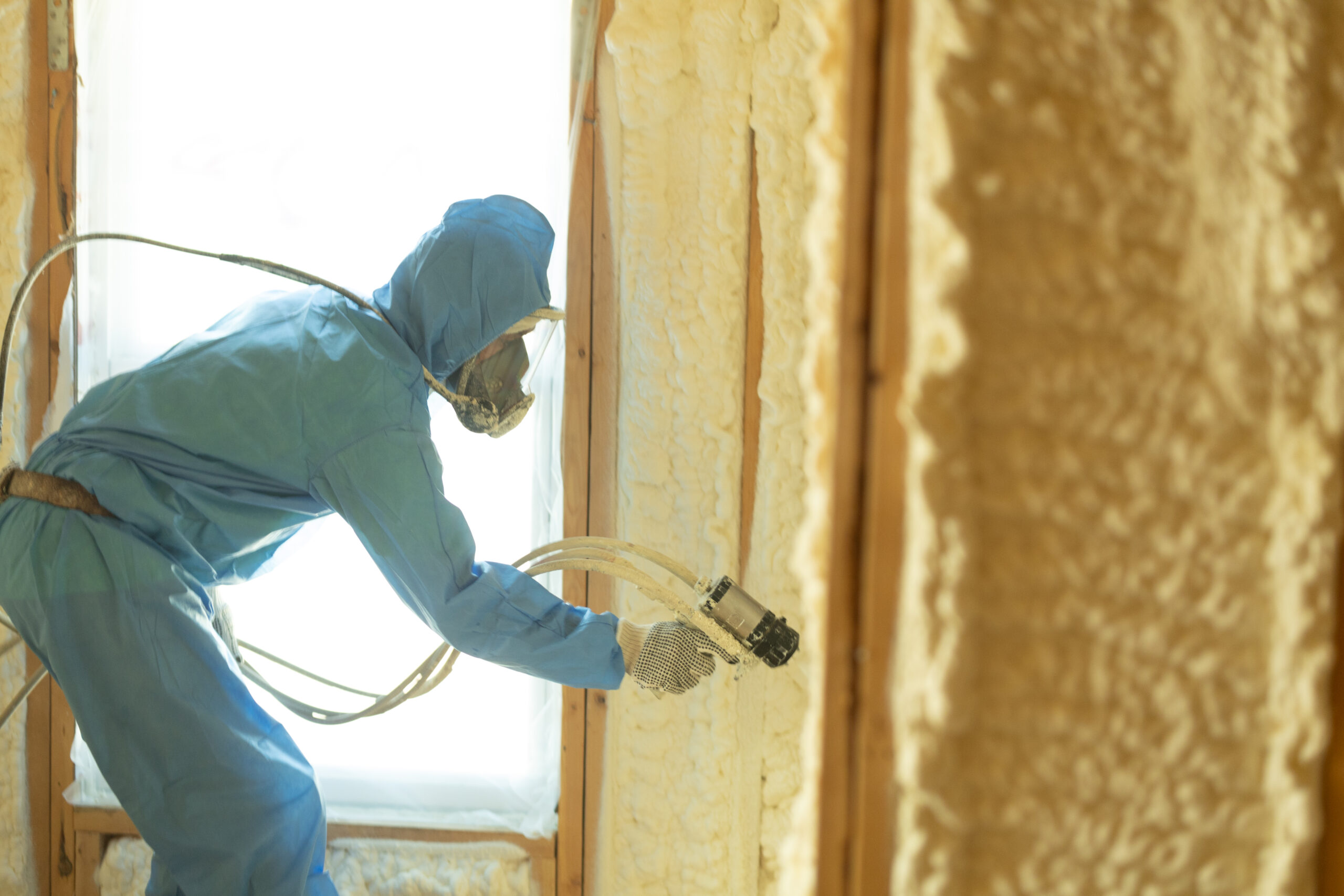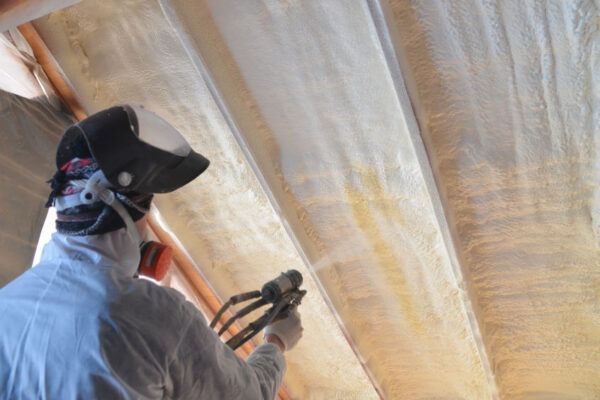Picking the Right Sort Of Spray Foam for Your Insulation Demands
Picking the Right Sort Of Spray Foam for Your Insulation Demands
Blog Article
Spray Foam: The Ultimate Option for Air Sealing and Insulation
Spray foam insulation has emerged as a leading remedy for effective air sealing and thermal insulation, using an unique mix of residential properties that establish it apart from standard approaches. Its capacity to expand and fill up spaces makes it specifically reliable in preventing air leakage, which can substantially influence power effectiveness. Comprehending the full range of its benefits, setup processes, and comparisons with other insulation types is essential for making notified decisions. As we explore these aspects, the implications for both new constructions and retrofits become increasingly substantial. What variables should affect your selection?
What Is Spray Foam?
Spray foam is a functional insulation material that combines the concepts of air securing and thermal resistance to improve energy performance in buildings. Made up largely of polyurethane or other similar substances, spray foam is applied as a liquid that expands upon call with surfaces, producing a strong, constant layer of insulation. This unique home allows it to fill up gaps, splits, and spaces that traditional insulation products may ignore, offering a premium air seal.
There are two main kinds of spray foam: open-cell and closed-cell. Open-cell spray foam is lighter and more versatile, providing superb noise absorption and a reduced R-value per inch - Spray Foam. On the other hand, closed-cell spray foam is denser, giving a higher R-value, dampness resistance, and added structural honesty to developing parts
The application process normally involves specialized tools, making sure a smooth application that complies with different substrates, consisting of wood, concrete, and metal. This flexibility makes spray foam suitable for both brand-new constructions and retrofitting existing structures. Its capability to develop an airtight barrier dramatically contributes to minimizing power intake and improving indoor air high quality, therefore making it a preferred option amongst builders and property owners alike.
Benefits of Spray Foam Insulation
One of the most considerable advantages of spray foam insulation is its phenomenal capacity to develop a continuous air barrier, which effectively reduces energy loss. Unlike standard insulation products, spray foam broadens to fill up spaces and fractures, making sure that air leak is considerably minimized. This characteristic not only enhances energy efficiency but also leads to decrease energy expenses gradually.
Furthermore, spray foam insulation offers exceptional thermal resistance, contributing to a more secure interior atmosphere. Its high R-value per inch permits effective insulation in confined rooms, making it excellent for attic rooms, walls, and crawl spaces. Moreover, the moisture-resistant properties of spray foam assistance avoid mold and mold development, promoting much healthier living problems.
One more critical advantage of spray foam insulation is its sound-dampening high qualities (Spray Foam). It effectively minimizes noise transmission in between rooms, developing a quieter and a lot more comfortable home atmosphere. The sturdiness of spray foam also sticks out, as it does not sag or clear up with time, preserving its efficiency throughout its life expectancy
Exactly How Spray Foam Works
Recognizing how spray foam insulation functions is important for valuing its performance in air sealing and thermal resistance. Spray foam insulation consists of 2 primary elements: isocyanate and polyol material. When these components are blended, they undergo a chain reaction that you can look here creates the product to increase rapidly, producing a thick foam that fills voids, cavities, and fractures.
As the foam increases, it adheres to surfaces, developing an impermeable seal that significantly decreases air seepage. This particular makes spray foam insulation very effective at avoiding drafts and wetness infiltration, which can bring about power loss and damage over time. Additionally, the closed-cell variation of spray foam uses premium thermal resistance as a result of its rigid structure, effectively reducing warm transfer.
The special properties of spray foam allow it to satisfy learn this here now irregular surfaces, ensuring comprehensive coverage and a seamless obstacle. Because of this, spray foam insulation not just boosts power effectiveness however additionally adds to enhanced indoor air quality by reducing the accumulation of toxins and allergens. Ultimately, understanding the mechanics behind spray foam emphasizes its duty as a remarkable option for insulation and air sealing in both residential and business applications.
Setup Process Review

Prior to installation, the area has to be effectively cleansed and prepped, guaranteeing that surface areas are devoid of particles, moisture, and dust. This step is important due to the fact that impurities can compromise adhesion and general efficiency. When the area is prepared, the application includes blending both elements of the spray foam, which increases upon contact and fills spaces successfully.
Educated experts must carry out the setup, using specific devices to make sure uniform protection and ideal density. Safety precautions, including putting on safety equipment and making sure appropriate ventilation, are critical throughout this procedure. After application, the foam normally remedies rapidly, forming a solid obstacle that improves energy efficiency.
Comparing Spray Foam to Traditional Insulation
When reviewing insulation choices, spray foam insulation stands out in comparison to typical materials such as fiberglass and cellulose. Unlike fiberglass and cellulose, which can permit air infiltration, spray foam increases upon application, filling up voids and gaps to develop a closed seal.
Additionally, spray foam supplies a greater R-value per inch than typical insulation types, supplying more reliable thermal resistance in a thinner profile. This particular is particularly helpful in spaces with restricted cavity depth. Spray foam is immune to dampness and mold growth, which can be a considerable problem with cellulose and fiberglass, particularly in damp settings.
However, spray foam insulation usually lugs a greater upfront expense than its standard equivalents. Homeowners should evaluate this first financial investment against long-term energy cost savings and efficiency advantages. Inevitably, while both insulation kinds offer their purpose, spray foam becomes an advanced option for contemporary insulation demands, specifically in regards to air securing and thermal performance.

Verdict
In recap, spray foam insulation stands for an extremely efficient service for accomplishing optimal air sealing and thermal resistance. Its unique residential or commercial properties, including dampness resistance and audio dampening, make it appropriate for different applications in both new constructions and retrofitting tasks (Spray Foam). The first expenses may be greater compared to traditional insulation products, the long-lasting benefits, such as considerable energy financial savings and enhanced indoor air top quality, justify the investment and highlight its worth in contemporary structure methods.
Spray foam insulation has arised as a leading solution for reliable air sealing and thermal insulation, supplying a distinct mix of residential properties that set it apart from typical methods.Spray foam is a functional insulation material that incorporates the principles of air securing and thermal resistance to boost energy performance in buildings.When examining insulation options, spray foam insulation stands out in comparison to typical materials such as fiberglass and cellulose. Eventually, while both insulation kinds serve their function, spray foam arises as a more sophisticated remedy for modern insulation requirements, specifically in terms of air sealing and thermal effectiveness.
In recap, spray foam insulation represents an extremely efficient remedy for achieving ideal air sealing and thermal resistance.
Report this page